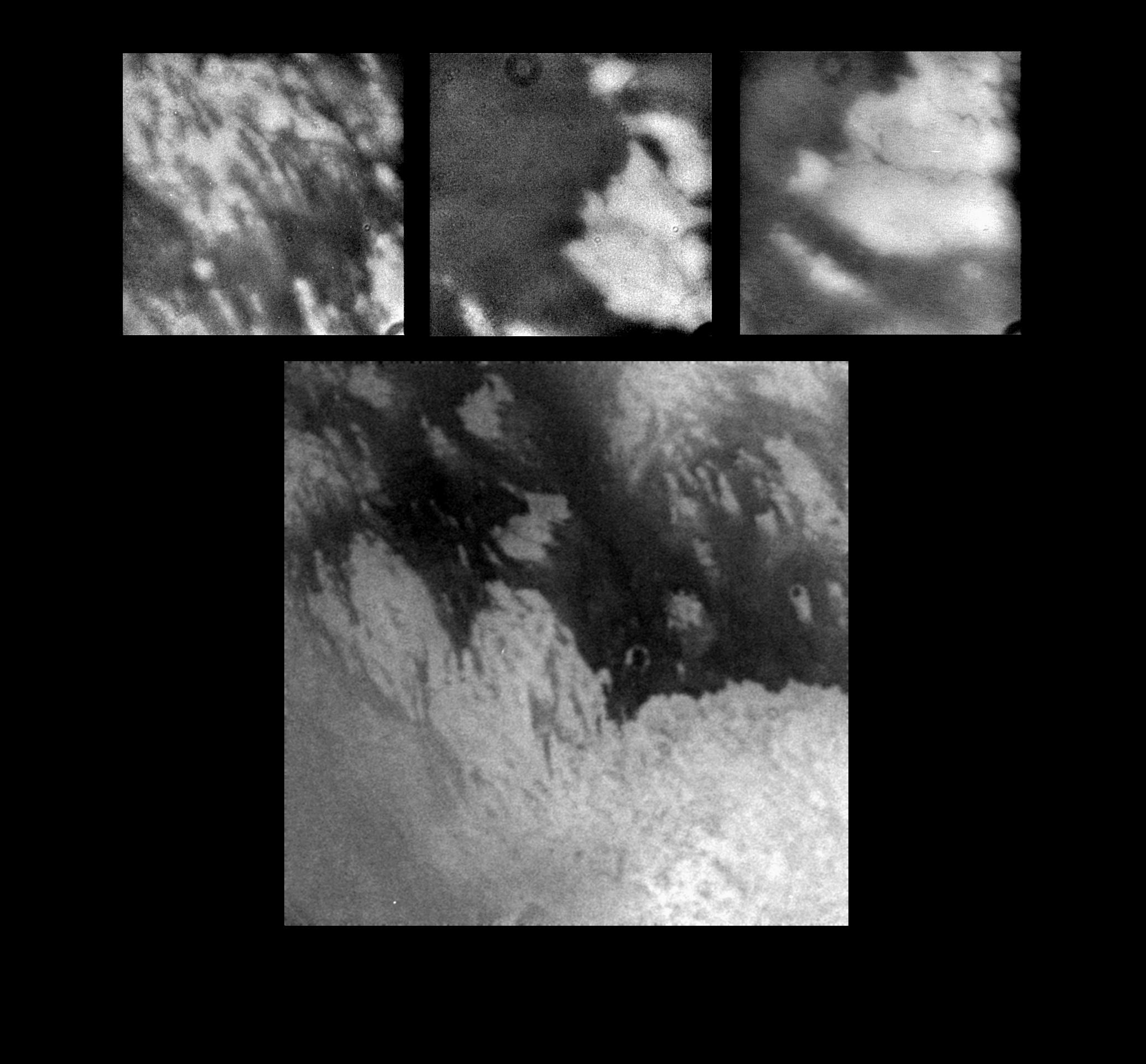
IMAGE: cass-titan-surfacedetails.jpg
These images, taken during Cassini's first close flyby of Titan, show
details never before seen on Titan's mysterious surface.
The large, bottom image shows a complex interplay between dark and
bright material on Titan's surface. This image was taken at a range of
about 340,000 kilometers (211,000 miles), and the entire view is
approximately 2,000 kilometers (1,200 miles) across. The surface
appears to have been shaped by multiple geologic processes. Although a
few circular features can be seen, there are no features that can be
definitively identified as impact craters. Cassini scientists are
studying these and other images acquired during the flyby to
understand the nature and origins of the intriguing features.
The three smaller images show details of some of the features seen
within the larger scene. The image on the upper right shows a scene
approximately 500 kilometers (311 miles) across in which bright and
dark bands of material span east to west. The upper middle and upper
right images show bright material surrounded by dark material in
scenes approximately 300 kilometers (186 miles) across. Very narrow,
dark bands can be seen crossing the bright terrain. These features are
approximately 2 kilometers (1.2 mile) across and up to a few hundred
kilometers long. The dark circular feature that appears at the top of
each of the upper images is a camera artifact that was not removed by
the preliminary image processing.
The tops of the images point to the northwest. The Sun is illuminating
Titan from nearly behind the spacecraft, and there are no shadows or
topographic shading visible in these images. All shading is due to
surface brightness contrasts. The images were captured by Cassini's
imaging science subsystem through near-infrared filters.
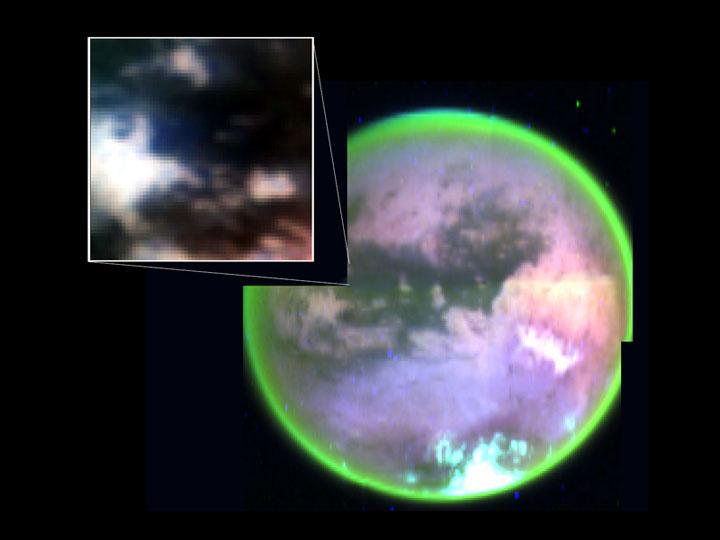
IMAGE: cass-titan-globe-haze.jpg
This image taken by Cassini's visual and infrared mapping spectrometer clearly shows surface features on Titan. It is a composite of false-color images taken at three infrared wavelengths: 2 microns (blue); 2.7 microns (red); and 5 microns (green). A methane cloud can be seen at the south pole (bottom of image). This picture was obtained as Cassini flew by Titan at altitudes ranging from 100,000 to 140,000 kilometers (88,000 to 63,000 miles), less than two hours before the spacecraft's closest approach. The inset picture shows the landing site of Cassini's piggybacked Huygens probe.
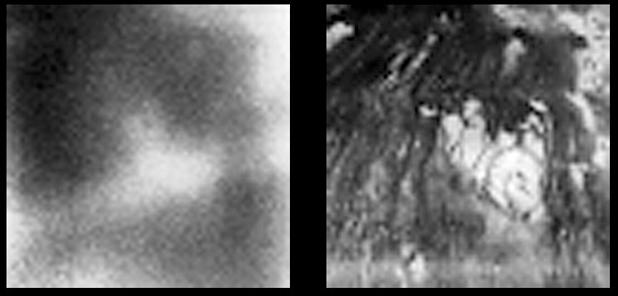
IMAGE: cass-titan-surface-hires.jpg
These images show the surface of Titan at two different infrared
wavelengths. They were captured by the visual and infrared mapping
spectrometer onboard Cassini as the spacecraft flew by at an altitude
of 1200 kilometers (745 miles) - Cassini's closest approach yet to the
hazy moon. The image on the right, taken at a wavelength of 2 microns,
is the most detailed picture to date of the Titan's surface. It
reveals complex landforms with sharp boundaries, which scientists are
eager to further study. The image on the left was taken at a
wavelength of 1 micron and shows approximately what a digital camera
might see.
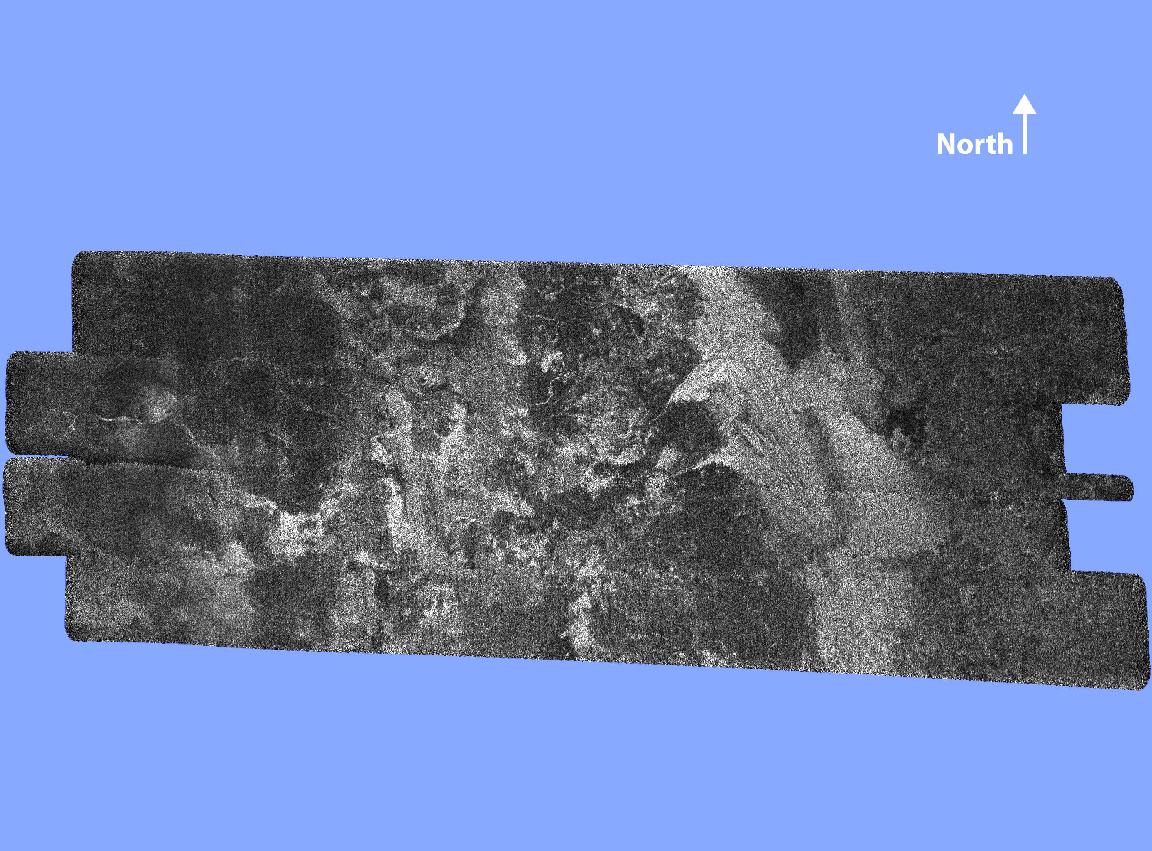
IMAGE: cass-titan-radar.jpg cass-titan-radar-sm.jpg
This radar image of the surface of Saturn's moon Titan was acquired on
October 26, 2004, when the Cassini spacecraft flew approximately 1,200
kilometers (745 miles) above the surface and acquired radar data for
the first time. It reveals a complex geologic surface thought to be
composed of icy materials and hydrocarbons.
A wide variety of geologic terrain types can be seen on the image;
brighter areas may correspond to rougher terrains and darker areas are
thought to be smoother. A large dark circular feature is seen at the
western (left) end of the image, but very few features resembling
fresh impact craters are seen. This suggests that the surface is
relatively young. Enigmatic sinuous bright linear features are
visible, mainly cutting across dark areas.
The image is about 150 kilometers (93 miles) wide and 250 kilometers
(155 miles) long, and is centered at 50 N, 82 W in the northern
hemisphere of Titan, over a region that has not yet been imaged
optically. The smallest details seen on the image are about 300 meters
(984 feet) across.
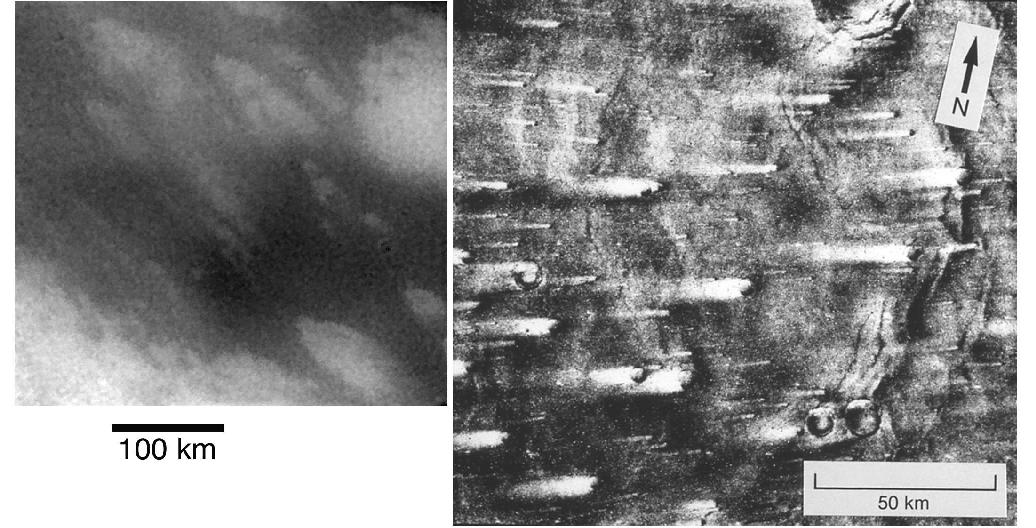
IMAGE: cass-titan-streaks-mars.jpg cass-titan-streaks-mars-sm.jpg
This image compares streaked terrain on Titan and Mars. At left is an
image from Cassini of the region where the Huygens probe is expected
to land. At right is a picture from NASA's Viking 1 orbiter, showing
streaks on Mars caused by winds blowing from right to left. The
streaks at the Huygens landing site were formed by some kind of fluid,
possibly wind, moving from the upper left to lower right (west to
east).
The Cassini image was taken on Oct. 26, 2004, by the spacecraft's
imaging science subsystem using near-infrared filters. North is 45
degrees to the right of vertical. The scale of this image is 0.83
kilometers (.52 miles) per pixel.
OTHER:
N15/N14 is high (about 12), indicating lots of lost N14 over geologic
time.
Complex hydrocarbons exist in upper atmosphere, including benzene,
diacetylene.




